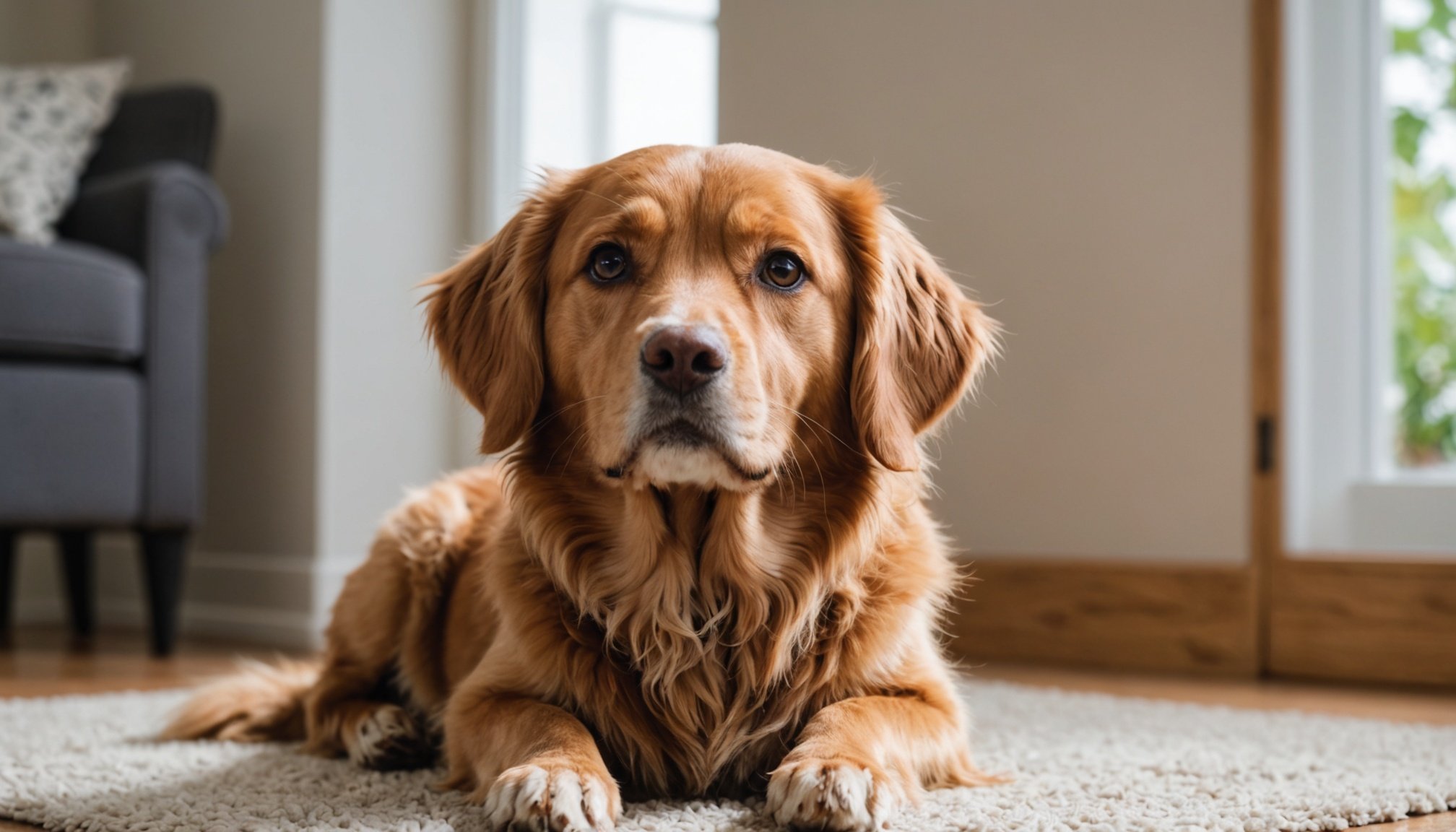Understanding Separation Anxiety in Recently Adopted Pets
Separation anxiety in pets, particularly in recently adopted pets, is a condition characterized by stress when left alone. It’s essential to note that this is not merely bad behavior but rather a valid emotional response to fear or discomfort. Pets may exhibit symptoms such as excessive barking, destructive behavior, or even self-harm when their owners are absent.
It is crucial to address separation anxiety early to prevent these behaviors from escalating. Early intervention can help alleviate stress for new pet owners and provide relief for the affected animals. Consider employing a consistent routine to make your pet feel secure. Simple measures, like leaving a shirt with your scent, can comfort an anxious pet.
In parallel : Ultimate guide to boosting joint health in senior dogs: proven strategies for happy, active pups
Attending to separation anxiety is not solely about correcting behavior but understanding the emotional needs of recently adopted pets as they adjust to their new homes. Establishing trust through consistent and caring interactions can significantly reduce anxiety levels. Adopting a pet involves a commitment to their mental and emotional well-being. By recognizing the early symptoms and implementing strategies to mitigate them, pet owners can foster an environment where pets feel safe and loved. Engaging with your pet outside of stressful times also reinforces a positive relationship, easing anxiety during separation.
Behavioral Strategies to Mitigate Separation Anxiety
Ameliorating separation anxiety in recently adopted pets involves several behavioral techniques. One effective method is gradual desensitization. This involves slowly increasing the duration that the pet spends alone, helping them adjust without overwhelming stress. Start with short separations, and gradually extend the time to build the pet’s confidence and resilience.
Also read : Essential lighting strategies for your corn snake habitat: the ultimate handbook
Providing engaging distractions is another strategy to alleviate anxiety. Toys and puzzles can occupy a pet’s mind, preventing destructive pet behavior that often accompanies anxiety. Offering these distractions when leaving helps create positive associations with your departure.
Establishing a consistent routine is crucial for anxiety relief. Regular schedules for feeding, playing, and walking provide a sense of security. Predictable activities help pets understand when to expect interactions and reduce stress associated with unpredictable changes in their environment.
To strengthen the effect of these strategies, pairing them with positive reinforcement can enhance your pet’s responsiveness to training. Rewarding calm and relaxed behavior teaches pets that remaining composed brings positive outcomes. Combine these techniques for a comprehensive approach to managing separation anxiety, ensuring your pet remains comfortable even in your absence.
Environmental Changes to Create a Calming Space
Creating a calming environment is essential in managing separation anxiety for pets. Setting up a safe space offers pets security and comfort when you are away. This area should include familiar items like a pet bed, which fosters a sense of belonging. Utilize comforting scents and sounds to soothe anxious behaviors. Devices that play calming music or nature sounds can have a therapeutic effect, providing a distraction from stress-inducing triggers.
Incorporating toys and physical stimulation within the environment benefits anxiety reduction. Toys that encourage active play and mental engagement, such as puzzle feeders or chew toys, can redirect focus away from stress. These items ensure your pet remains entertained and occupied, minimizing the negative impact of your absence.
Ensure the chosen space is tranquil, away from noise and disturbances, reinforcing a feeling of safety. This special area acts as a haven where pets can retreat to relax and feel at ease. Establishing a calming environment helps recently adopted pets acclimatize to new homes by reducing anxiety, supporting overall mental well-being, and promoting healthy pet behavior. Through thoughtful environmental adjustments, pet owners contribute positively to their pets’ emotional health.
Effective Training Tips for Owners
Incorporating effective training techniques is pivotal for managing separation anxiety and encouraging healthy pet behavior in recently adopted pets. Obedience training is a foundational element, as it provides structure and helps establish expectations. Begin with basic commands like “sit” or “stay,” and progressively increase difficulty levels as your pet becomes more comfortable and confident.
Crate training can be beneficial for creating a sense of security. When done properly, it involves positive reinforcement, making the crate a safe and inviting space. Introduce the crate gradually, using treats or toys to entice your pet, and always ensure it remains a positive part of their environment.
Positive reinforcement is key in cultivating desirable behaviors. Rewarding your pet with treats, affection, or playtime for calm and composed actions reinforces these behaviors. Positive reinforcement should be immediate and consistent to solidify the connection between behaviour and reward.
Building confidence through continued training and socialization is also crucial. Encourage interactions with different environments and people—always at a comfortable pace for the pet. These activities help enhance emotional resilience, making pets less dependent on their owners for reassurance and promoting a more balanced emotional state.
Expert Advice from Veterinarians and Animal Behaviorists
Listening to expert guidance can significantly aid in managing separation anxiety. Insights from veterinarians and animal behaviorists reveal that understanding the underlying causes of anxiety is crucial. These professionals can suggest tailored strategies based on the individual needs of your pet. They emphasize the importance of recognizing symptoms early and using effective techniques to build trust and comfort.
Consulting professionals is vital, especially when anxiety becomes severe. They can determine whether behavioral changes alone suffice or if additional interventions, like medications, might be necessary. Seeking veterinary advice ensures that any recommended treatments are safe and suitable for your pet’s health and well-being.
For some pets, vets might suggest medications or supplements as part of a comprehensive anxiety management plan. Such options are typically considered when traditional behavioral techniques don’t provide sufficient relief. They should always be used under professional guidance.
Ultimately, expert advice reinforces the importance of a well-rounded approach. Combining veterinary advice with established anxiety reduction methods ensures that pet owners can address separation anxiety effectively, promoting a more stable and comfortable environment for recently adopted pets.
Building Emotional Resilience in Pets
Enhancing emotional support and creating a strong bond between owners and recently adopted pets is vital for curbing separation anxiety. A key element in this process is employing resilience techniques. Establishing trust involves consistent, positive interactions, affirming to pets that their environment is safe and nurturing.
Socialization plays a crucial role in fostering emotional stability. Exposing pets to varying environments, people, and other animals in a controlled manner can reinforce their adaptability. By promoting diverse experiences, pets become more comfortable and less dependent on their owners, reducing anxiety triggers when left alone.
Encouraging independence is another strategy for diminishing anxiety. Gradually increasing the distance and duration of separations can assist pets in developing confidence. This practice, when paired with supportive interactions, assures pets of their capacity to manage when owners are absent.
To build emotional resilience, owners must remain patient and observant, tailoring strategies based on their pet’s unique needs and reactions. Developing a stable emotional foundation in pets not only alleviates anxiety but also enhances the overall quality of their relationship with their human caregivers. By fostering this resilience, pets are better equipped to handle short periods of absence with ease and comfort.











